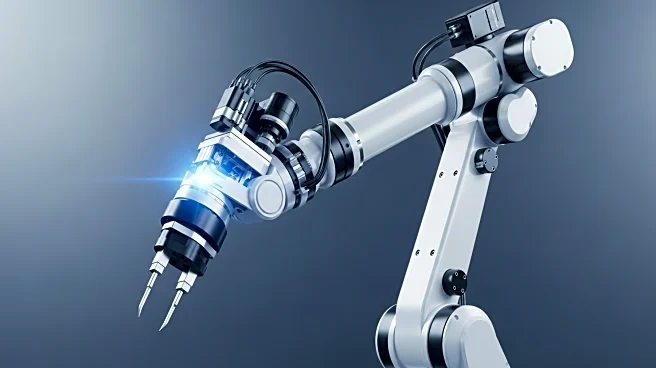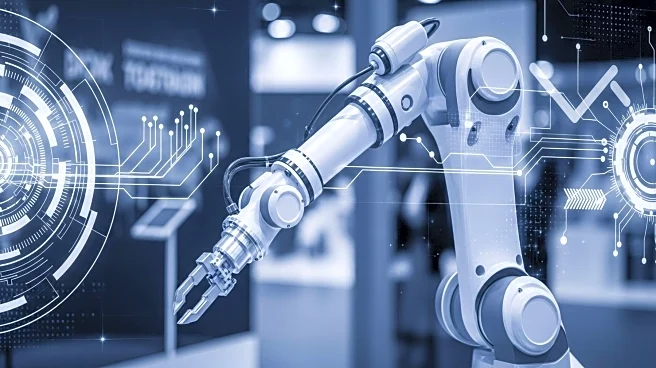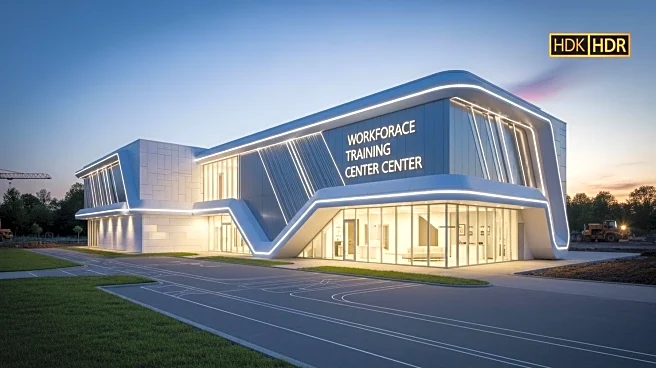What's Happening?
Universal Robots has introduced the UR8 Long, a new collaborative robot designed for industrial automation tasks such as welding, bin picking, and inspection. The robot was launched at FABTECH in Chicago on September 8, with orders now open and shipping expected to begin in October. The UR8 Long features a 1,750 mm reach, similar to the UR20, but with a slimmer profile, 30 percent lighter mass, and an 8 kg payload capacity. Its compact design is suitable for space-constrained environments, overhead systems, and gantries. The robot runs on UR’s PolyScope 5 and PolyScope X platforms and supports MotionPlus, an advanced motion control package. Enhanced freedrive features allow operators to manually guide the arm, simplifying setup and programming. The UR8 Long is particularly designed for welding applications, emphasizing ease of use and precision.
Why It's Important?
The introduction of the UR8 Long collaborative robot represents a significant advancement in industrial automation, offering businesses a tool that can enhance productivity and safety. By providing a longer reach and advanced features, the UR8 Long enables automation of tasks that were previously manual, potentially reducing physical strain on workers and improving efficiency. This development is likely to benefit industries that rely heavily on repetitive and physically demanding tasks, such as manufacturing and fabrication. The robot's ability to deliver better weld quality and reduce rework can lead to cost savings and improved product quality, making it an attractive option for companies looking to optimize their operations.
What's Next?
As the UR8 Long begins shipping in October, businesses in the manufacturing and fabrication sectors may start integrating this technology into their operations. The robot's capabilities could lead to increased adoption of automation solutions, prompting companies to explore new applications and workflows. Industry stakeholders, including partners like THG Automation, Hirebotics, and Vectis Automation, are already demonstrating the robot's capabilities, which may drive further interest and investment in collaborative robotics. The ongoing development and enhancement of robotic technologies could also influence workforce dynamics, necessitating training and adaptation to new automated systems.












